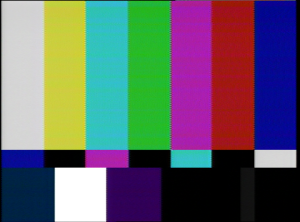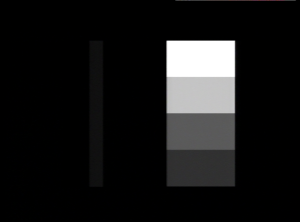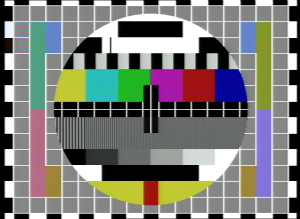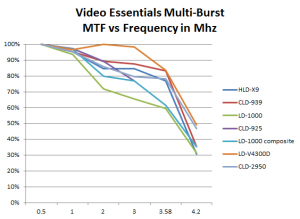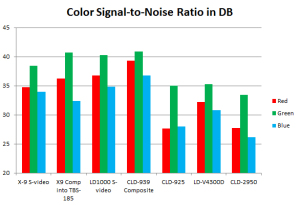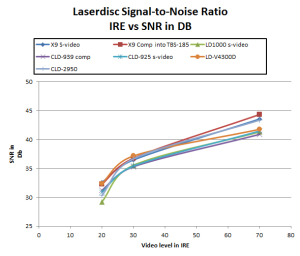The CLD-2950 was Pioneer’s flagship PAL/NTSC player from 1993 until the arrival of the CLD-D925 in 1996. Physically the player is little bigger and heavier than it’s successor. As part of my quest to find an ‘acceptable’ PAL player – I decided to take look.
CLD-2950 Design
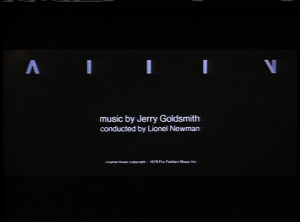
CLD-2950 – Alien – showing CLV Smear as well as slight ghosting and the worst cross-talk (look at the Phantom in the left center of the screen).
The back of the player features:
- phono composite video output,
- s-video output
- 2 x SCART in and output,
- stereo phono audio outputs
- an optical digital audio output
- a remote control in/out
- a CD deck synro input.
While the deck has no AC-3 RF output, it’s not too hard to add one.
I purchased my CLD-2950 from Ebay, and like buying anything from Ebay – you roll the dice and you see what you get. In this case: I got a player with mechanical and electrical faults ! These faults somewhat hinder giving a full verdict on the player, so I’ll keep this short and sweet.
So What Was Wrong With It ?
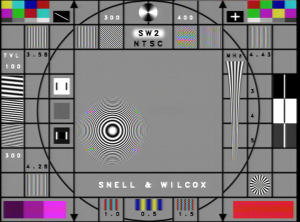
CLD-2950 – from Video Essentials, (NTSC CAV) overall a reasonable. Note – using the Snell and Wilcox TBS-185’s comb filter.
The first problem was failure to clamp/spin-up – this is a very common fault, and resolved by replacing the small rubber belt at the front right of the player.
The second problem was diagonally rolling of the electronically generated image (i.e. blue-screen). This is probably an age issue – and would require some poking around to resolve.
The third problem was enormous cross-talk on CLV discs, likely due to alignment/calibration issues.
Pioneer CLD-2950 Screen Captures
Compared To Other PAL Players

Pioneer CLD-D925, CLD-2950 and LD-V4300D, PAL ‘Jason Bars’ frequency bursts compared. Note the image has been scaled/zoomed for clarity.
In PAL, compared to the CLD-D925, the CLD-2950 is a little bit softer, and is therefore much softer than the LD-V4300D.
NTSC luma noise levels were very good (possibly due to the softer frequency response curve), but NTSC chroma noise levels were ‘PAL player bad’.
Overall it’s hard to place the PAL players in an absolute ordering, since the faults particular to each player make it hard to recommend any of them.
One thing I noticed during testing was that the LD-V4300D as well as having excellent frequency response in PAL, it also has rock solid timebase – if you look closely at the Jason Bars frequency burst you’ll see how stable it’s horizontal timebase is compared to the CLD-D925 and 2950.
Conclusions
I purchased the CLD-2950 in search of an acceptable PAL player. After reviewing it: I’m still looking. It might be that I got a ‘bad copy’, but there doesn’t seem to be anything special here.
Next up is either the DVL-919E or CLD-D515. Hopefully one of the two will be the acceptable PAL player I’ve been looking for.
As it stands, I’m tempted to look at software solutions to the ghosting present on the LD-V4300D. The difference in sharpness between the consumer decks and the professional one is pretty clear in the Jason bars frequency burst comparison.

